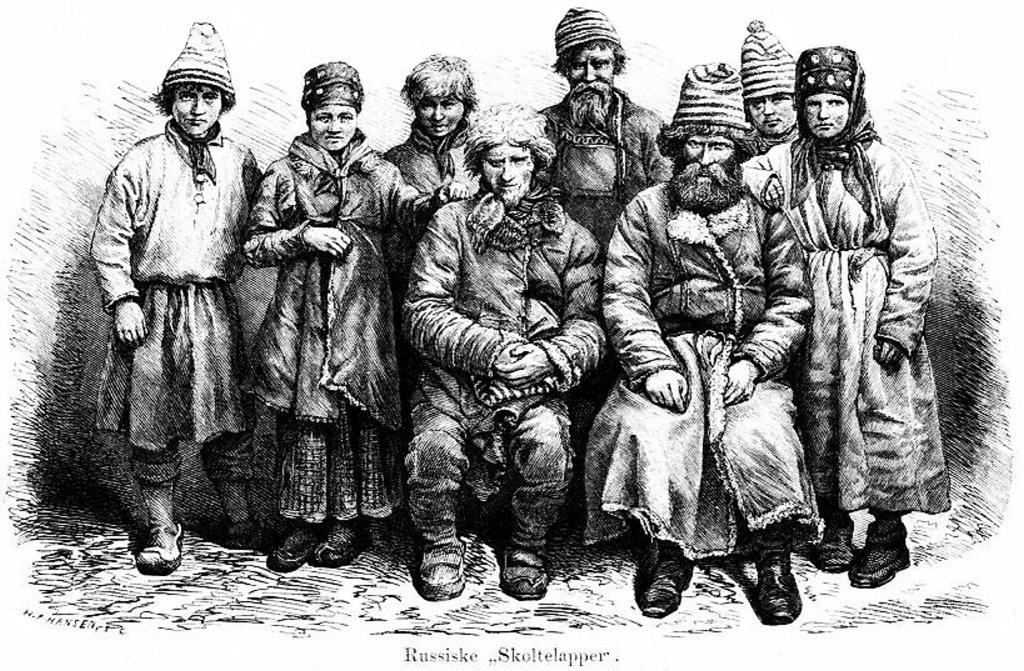A review of "A Grammar of Skolt Sami" by Timothy Feist
This is a doctoral dissertation on Skolt Sami (or
Skolt Saami), one of the Sami languages. The Sami, often called Lapps in older
literature, are the native people of the northern districts of Norway, Sweden
and Finland, plus the Kola Peninsula in Russia. The ancestors of the Sami probably
arrived in the Nordic region during the Stone Age, following the reindeer
herds. The Sami are “White” (not “colored”, as some people imagine), but their
languages are not Indo-European. Rather, they belong to the Uralic language
family (sometimes called Finno-Ugric), together with Finnish, Estonian and
Hungarian. 10 different Sami languages, with varying degrees of mutual
intelligibility, are recognized by linguists. The dominant one is called
Northern Sami. By contrast, Skolt Sami is very small and only spoken by a few
hundred people. In fact, many individuals who are Skolt Sami ethnically
speaking no longer speak the Skolt Sami language, instead using the language of
the surrounding majority population.
The original homeland of the Skolt Sami is the Kola Peninsula, with Petsamo (Pechenga) as the westernmost outpost. The area was controlled by the Russians, except for Petsamo, which was Finnish during the interwar period. After World War II, Petsamo was permanently awarded to the Soviet Union. Since the Skolt Sami in the Petsamo region had sided with Finland against the Soviets, the local Skolts had to leave the area and move to Finnish territory after the war. In Finland, the Skolts settled in Inari, a Finnish municipality which today boasts four official languages: Finnish, Northern Sami, Inari Sami and Skolt Sami. This doctoral dissertation only deals with the Skolt dialects spoken in Inari (and originally around Petsamo). The Skolt Sami who always lived on Russian territory further east are not included in this study.
It should be noted that this isn't a cultural and historical study, and only one brief chapter deals with such issues. Nor is it a dictionary. It's above all a linguistic study of Skolt Sami grammar. It's therefore a rather narrow work only of interest to other linguists. The book is also available on the web. I admit that I don't belong to the target audience! That being said, I must nevertheless commend the author for collecting information on this endangered language during restless white nights in northern Finland…
The original homeland of the Skolt Sami is the Kola Peninsula, with Petsamo (Pechenga) as the westernmost outpost. The area was controlled by the Russians, except for Petsamo, which was Finnish during the interwar period. After World War II, Petsamo was permanently awarded to the Soviet Union. Since the Skolt Sami in the Petsamo region had sided with Finland against the Soviets, the local Skolts had to leave the area and move to Finnish territory after the war. In Finland, the Skolts settled in Inari, a Finnish municipality which today boasts four official languages: Finnish, Northern Sami, Inari Sami and Skolt Sami. This doctoral dissertation only deals with the Skolt dialects spoken in Inari (and originally around Petsamo). The Skolt Sami who always lived on Russian territory further east are not included in this study.
It should be noted that this isn't a cultural and historical study, and only one brief chapter deals with such issues. Nor is it a dictionary. It's above all a linguistic study of Skolt Sami grammar. It's therefore a rather narrow work only of interest to other linguists. The book is also available on the web. I admit that I don't belong to the target audience! That being said, I must nevertheless commend the author for collecting information on this endangered language during restless white nights in northern Finland…

No comments:
Post a Comment